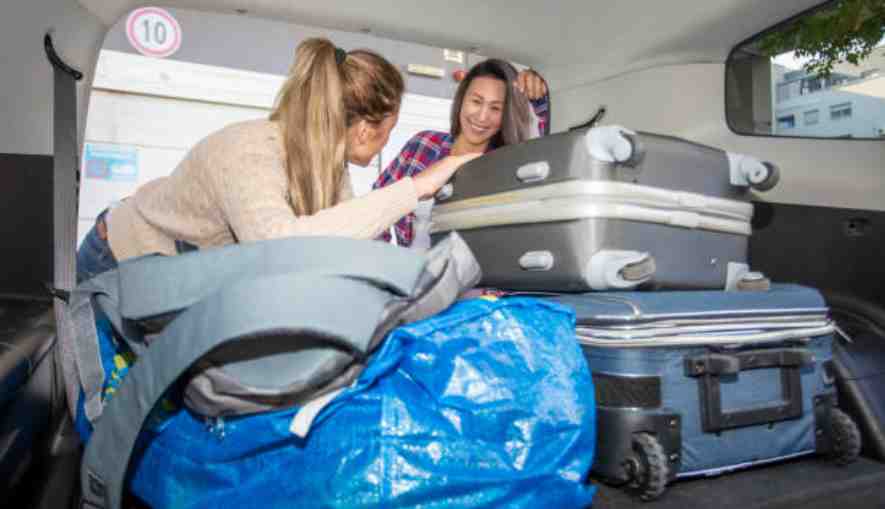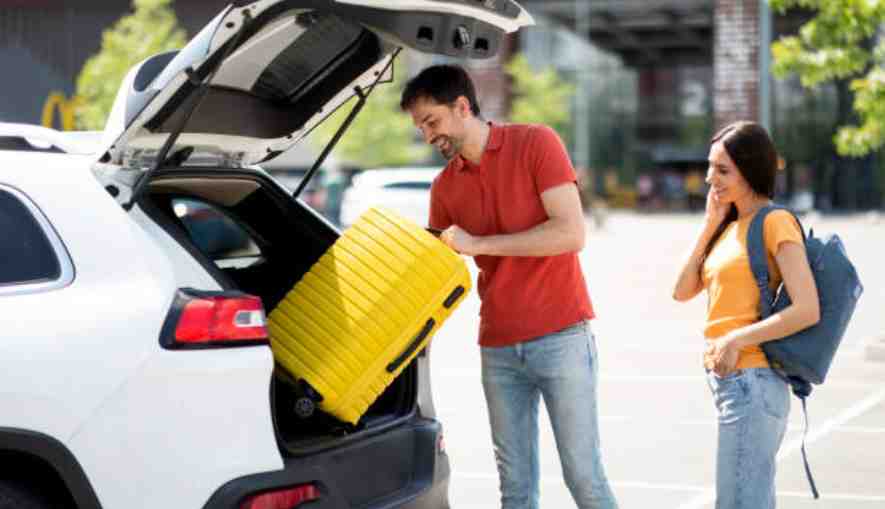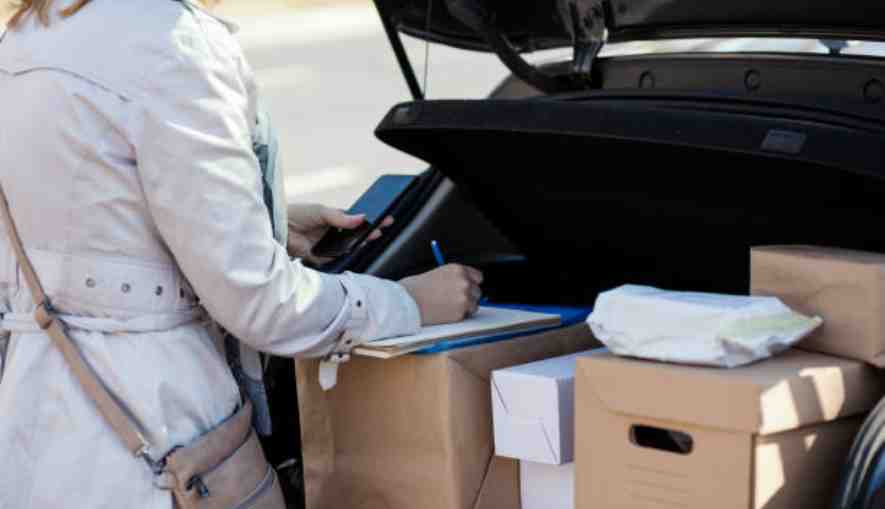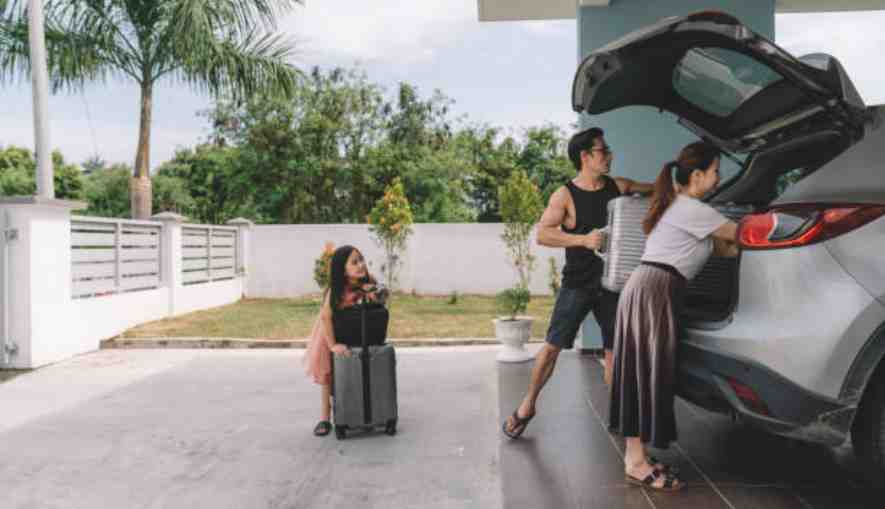Moving can be a daunting task, especially when it involves packing your car efficiently and safely. Whether you’re headed off to college, relocating for a new job, or simply moving across town, the way you pack your car can make a significant difference in how smoothly the process goes.
How to Pack Your Car for Moving? When packing your car for a move, start by placing heavier items at the bottom and lighter, more fragile items on top. Ensure all items are secure to prevent movement and damage during transit.
This blog will guide you through the best practices for packing your car, including what items to pack first, how to maximise space, and how to secure your belongings safely. By the end of this article, you will be equipped with the knowledge to pack your car like a pro, ensuring all your items arrive at your new home just as they left.
Effective Packing Techniques Pack Your Car for Moving

Moving can be a hectic process, but packing your car efficiently can save you time and prevent damage to your belongings. Whether you’re moving across town or preparing for a longer journey, the way you pack can make a significant difference. Follow these tips to optimise your space and ensure a safe transit.
Loading Heavy Items
Start with a Solid Base: Begin by loading the heaviest items first. Place them towards the centre of the trunk closest to the backseat. This placement helps in maintaining the balance of the car and ensures safer handling during the drive.
Even Distribution: Make sure that the weight is evenly distributed on both sides of the car to avoid any imbalance. This is crucial for the safety and stability of the vehicle.
Protection and Padding: Use blankets, bubble wrap, or old towels to wrap fragile items. Heavy items like furniture can cause damage if they shift, so securing them is essential.
Utilising Spaces Efficiently
Filling the Gaps: After placing large items, look for gaps where you can fit smaller items. This includes spaces under chairs, in between larger objects, or even using the footwells of the back seats.
Boxes and Suitcases: Use suitcases and boxes to consolidate smaller items. These containers can be stacked securely and provide an additional layer of protection for the contents inside.
Vacuum Bags: For soft items like clothing, bedding, and curtains, vacuum seal bags can drastically reduce the volume they occupy, making more room for other essentials.
Securing Items
Strategic Use of Straps: Use bungee cords or straps to secure items in place. This prevents movement and reduces the risk of damage or accidents while driving.
Check Visibility and Access: Ensure that your rear view visibility is unobstructed. Also, pack in a way that allows you to access necessary items quickly during stops or upon arrival.
Regular Checks: On longer trips, it’s wise to stop periodically to check that everything is holding up as expected, especially after a bumpy road or sudden stops.
Special Considerations Pack Your Car for Moving

When preparing for a long-distance move, packing your car efficiently and safely is crucial. It’s not just about squeezing in as many items as possible but ensuring that the load is secure and complies with legal standards. This guide provides insights into how to effectively pack your vehicle while adhering to safety and legal regulations.
Understanding Your Car’s Capacity
Assess the Limit: Check your car’s manual for the maximum weight it can handle and stick to it to avoid damage.
Distribute Weight Evenly: Ensure that the weight is evenly distributed to maintain balance and control of the vehicle.
Essential Packing Materials
Use Sturdy Boxes: Opt for high-quality, uniform boxes for easy stacking.
Securing Materials: Invest in straps and bungee cords to secure items during transit.
Protective Padding: Use blankets and bubble wrap to protect delicate items from bumps and scrapes.
Packing Strategy
Bottom to Top: Place the heaviest items at the bottom to lower the centre of gravity.
Visibility and Accessibility: Ensure that the driver’s visibility is unobstructed. Keep essential items like snacks, chargers, and emergency kits accessible.
Avoid Overloading: Overpacking can lead to reduced gas mileage and increased wear on your vehicle.
Legal and Safety Regulations
Check Legal Requirements: Different states may have different rules regarding what can be visibly packed in a car. Ensure compliance with local traffic laws, especially those related to obstructed views.
Emergency Preparedness: Equip your car with a first aid kit, flashlight, and necessary tools. Make sure to have a spare tire and the know-how to change it.
Secure All Items: Properly secure all items to prevent them from shifting, which can distract the driver or, worse, cause an accident.
Final Checks and On-the-Road Tips Pack Your Car for Moving

Pre-Departure Checklist
Before you embark on your journey, it’s critical to ensure that your car is fully prepared for the trip. Here’s a detailed checklist to help you cover all the bases:
Vehicle Maintenance:
Check oil levels and top up if necessary.
Ensure that your tires are inflated to the correct pressure and have sufficient tread.
Verify that all lights and indicators are functioning properly.
Make sure the brakes are responsive and in good condition.
Emergency Kit:
Pack an emergency kit that includes items such as a first aid kit, flashlight, batteries, a multi-tool, and road flares.
Include a spare tire, jack, and the necessary tools to change a tire.
Documents:
Gather all necessary documents including your driver’s license, car registration, insurance papers, and any required travel permits or documents.
Cleaning and Organizing:
Clean the interior of the car to create more space for packing and to improve your comfort during the trip.
Remove unnecessary items that can add extra weight and reduce fuel efficiency.
Tips for a Smooth Journey
Plan Your Route:
Pre-plan your route and consider using a GPS or a map app to help navigate, especially through unfamiliar areas.
Regular Breaks:
Take regular breaks to rest and refresh yourself. This is crucial for maintaining concentration and avoiding fatigue.
Stay Hydrated and Nourished:
Keep water and snacks within easy reach to stay hydrated and maintain energy levels throughout the journey.
Stay Informed:
Keep updated on weather conditions and traffic updates along your route. Apps and radio traffic reports can be very useful for this.
Safety First:
Always prioritise safety over haste. Obey traffic laws, speed limits, and road signs to ensure a safe trip for yourself and others.
Conclusion
Packing your car for a move doesn’t have to be a puzzle. With the right strategy, you can maximise space, protect your belongings, and make unpacking a breeze. Remember to give priority to heavy and essential items, use soft items as buffers, and keep the items you’ll need first at an easily accessible place.
As you embark on your moving journey, consider these tips not just as guidelines, but as stepping stones to a successful transition to your new home. The key is to stay organised and calm throughout the process. Safe travels and happy moving!


